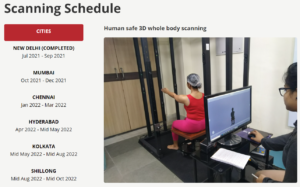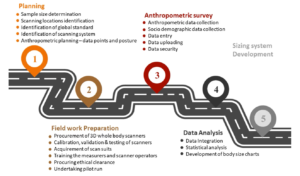Have you ever been in a situation in which you bought the same size of shirt or jeans from two different brands and they had entirely new fits? While one may be a perfect fit, the other might be a little tight or loose. This is common for both men’s and women’s apparel. Have you ever wondered why this happens? Indiasize is here to solve this issue, for Indian consumers.
Well, each fashion brand has its own idea of a perfect fit. While some brands follow US standard sizing, others may use UK standard sizing. Designers use various methods of size calculation such as S, M, L, etc, and also in 2, 3, 4, etc. Both these sizes have entirely different measurements for each body part.
Besides, people living in various continents and countries do have unique body features. It is impossible for a universal sizing standard to be prevalent. In India, fashion brands and consumers alike always have this problem when deciding the measurements for their products. How can brands ensure that their products are comfortable for their customers throughout their country?
In this article, we are going to discuss the INDIAsize project initiated by The Indian Ministry of Textiles, in order to develop standard body sizes for the Indian apparel sector to address the prevailing disparities and inconsistencies in providing fits.
What is the INDIAsize project?
In association with The National Institute of Fashion Technology (NIFT) New Delhi, the Ministry of Textiles, Govt. of India will be doing an anthropometric research study to develop a comprehensive body size chart for the Indian population.
The Secretary of Ministry of Textiles, Mr. UP Singh says, “The INDIAsize will result in the creation of size identification number for a customer through mapping, categorization and defining of their body size. This will help manufacturers to produce goods suited for the body size of the target consumer and help consumers to identify sizes that will be best suited for them resulting in a match and hence improved sales. Apart from apparel, the findings of the study will also have applications across various other industries where the insights from this data can produce ergonomically designed products that are well suited for the Indian population.
This initiative will put Indian among other developed nations that have their own standardized measurements such as UK size, US size, Mexican size, etc.
When will the INDIAsize project be completed?
The project is expected to scan 25000 male and female persons between the age group of 15 years and 65 years in six different cities located in six regions of India.
Below is the scanning schedule for this project:

So if you are in these, don’t forget to be a part of this. To participate, fill out this form.
The selection of cities from a wide range of populations allows understanding body shape various based on various demographics of the population like region, income, rural or urban.
By 2022, this project is expected to be completed. The standardized body chart for Indian apparel will add tremendous value to the consumer in providing better fits.
Milestones in this project

Honorable Minister of Textiles, Mr. Piyush Goyal says, “The Indian apparel industry is poised for the next stage of growth in the coming years As a growing industry, it is necessary for Indian apparel to develop its own standards to focus on quality for improving the local and global acceptability of our products. A fundamental element for any apparel is its ‘fit’.”
No Time to Read This Post? Download the PDF here!
Bonus Topic: Vanity sizing
Brands used to follow a technique called ‘vanity sizing’. In this method of sizing, the designers would assign smaller sizes to their items in order to boost sales. They try to bank on the emotions of the buyer. When you buy such items, the buyer will be having slightly higher measurements compared to the measurement mentioned on the product. This practice was widely popular among women’s jeans.





